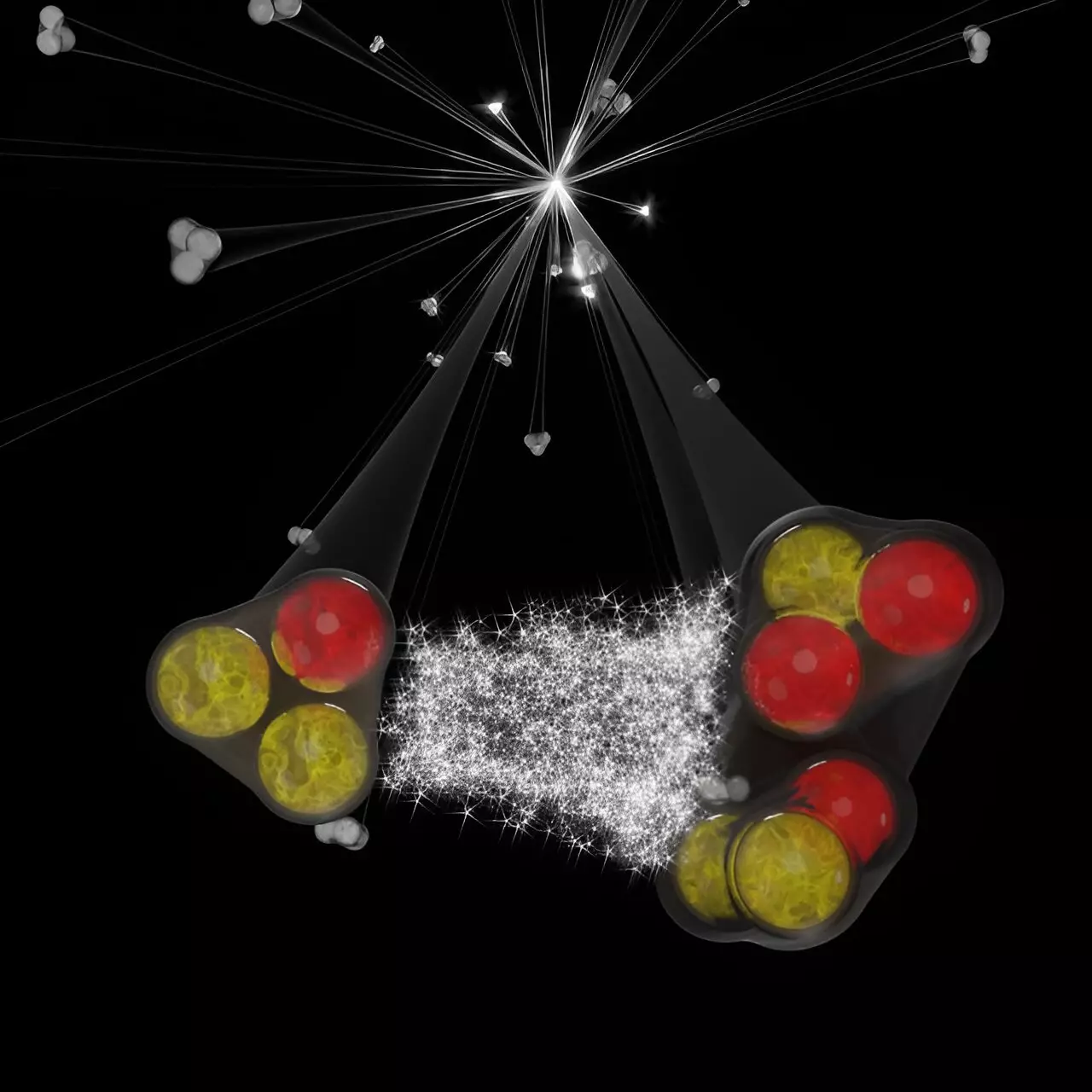The intricacies of nuclear physics continue to challenge researchers, particularly when it comes to understanding the forces that govern interactions among multiple baryons. Recent contributions from the ALICE collaboration highlight a significant advancement in this realm by examining kaon-deuteron and proton-deuteron systems. Their findings pave the way for a deeper understanding of three-body nuclear interactions, an essential cornerstone for addressing many phenomena within modern nuclear physics. As the interplay between fundamental forces becomes increasingly complex, a nuanced approach to studying these interactions remains pivotal.
Challenges in Nuclear Interaction Studies
Traditionally, fundamental forces are succinctly described as interactions between pairs of particles. However, as systems increase in complexity, particularly those involving three or more particles, this generalization becomes problematic. The framework necessary to explore the behaviors of strongly interacting three-hadron systems is crucial, chiefly for comprehending the very structure of atomic nuclei, the behavior of high-density nuclear matter, and the enigmatic characteristics of neutron star cores. The challenge lies not only in the fundamental understanding of these forces but also in the mathematical tools designed to model their interactions efficiently in a multifaceted environment.
In high-energy environments, like those encountered at the Large Hadron Collider (LHC), proton-proton collisions yield an abundance of particles dispersed across minimal distances—often in the femtometer range (10^-15 m). It raises critical questions about the influential dynamics at play among these particles prior to their ejection in various trajectories. If two primaries are created in close proximity with comparable momenta, they may interact through quantum statistical principles, Coulomb forces, and strong interactions. This phenomenon creates a context where analyzing correlations between various particles, such as kaons and deuterons, reveals insights into the three-body configuration as mentioned.
The ALICE experiment’s robust capabilities in particle identification, especially during high-multiplicity proton-proton collisions at a center-of-mass energy of 13 TeV, facilitate detailed investigations of these correlations. The correlation function established in this research serves as a qualitative measure of the likelihood of discovering two particles exhibiting specific relative momenta, thus contrasting their energies against a baseline of complete independence. A baseline correlation value is set at unity—indicating no interaction—while values diverging from this signify either attractive or repulsive forces.
Surprisingly, both kaon-deuteron and proton-deuteron systems exhibited correlation functions lying below unity, indicating an overarching repulsive interaction for low transverse momenta. The compact nature of the distances identified—approximately 2 femtometers between deuterons and the other hadrons—is noteworthy, revealing profound insights into interplay at such scales.
While the correlation characteristics between kaons and deuterons could be effectively modeled through a two-body paradigm, the proton-deuteron interaction defied these simplified frameworks, necessitating advanced three-body calculations that thoughtfully integrate the deuteron’s structural attributes. Through combing two- and three-body strong interactions, researchers identified a means to describe the data excellently. The sensitivity showcased by the correlation function bears significance for interpreting the short-range dynamics of three-nucleon systems, underscoring their potential to shed light on previously obscure aspects of nuclear interactions.
The methodology employed by ALICE is indeed groundbreaking, providing a novel avenue to explore three-body systems at the LHC. Furthermore, a continuation of this research design is on the horizon, as future data from LHC Runs 3 and 4 aim to expand upon these findings by incorporating three-baryon interactions in the strange and charm quark sectors. These sectors have remained experimental frontiers, but ongoing developments may soon unveil new layers of understanding in the quest to unpack the complexities of subatomic interactions.
The study of three-body nuclear systems represents a critical frontier in contemporary physics. The ALICE collaboration’s pioneering research enhances our grasp of these interactions, revealing both the challenges inherent in the modeling of such complex systems and the promising pathways for future inquiry. As we delve deeper into the fundamental forces governing our universe, these groundbreaking findings remind us of the intricate tapestry of interactions that govern nuclear physics and the continual evolution of our understanding.

